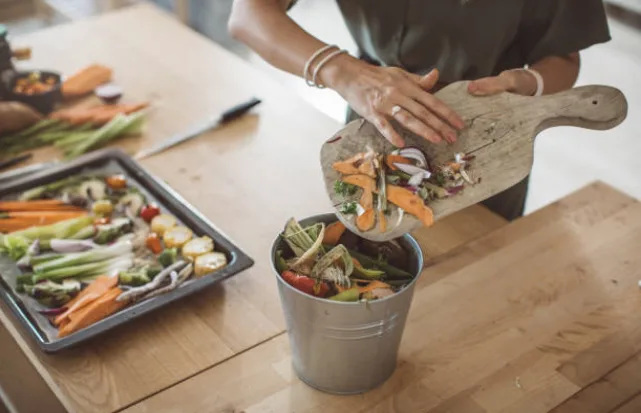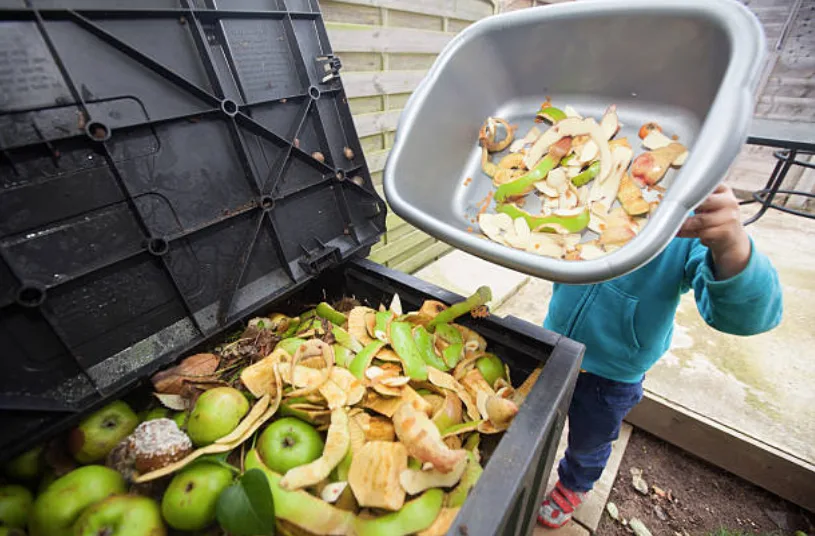Food waste in Australia is an increasing problem and it is growing at an alarming rate.
Worldwide, up to 1.6 billion tonnes of edible food – worth $1.2 trillion – is wasted every single year. A staggering THIRD of all food produced for human consumption ends up being uneaten and discarded.
How much food does Australia waste every year?
In Australia alone, over 5 million tonnes of food ends up in landfill every year. That’s enough to fill 9,000 Olympic swimming pools, or it is roughly 140kg per person, or 345kg per household.
The Australian government estimates we waste around $20 billion in food annually.
For the typical household in New South Wales, this equates to about $1,036 per year. This is the monthly budget for the average household.

Why does Australia waste so much food?
There are many reasons why we tend to waste so much perfectly good food.
One of the most common reasons is that Australian households cook too much food and do not know how to use leftovers.
We also throw food out by mistake before the use-by date, or forget about food in the fridge until they have expired.
The supermarket, agriculture and hospitality industries also contribute massively to food waste. Overfishing, strict food regulations and labelling and packaging restrictions are reasons behind this.

Who wastes the most food?
According to government data, young people aged between 18-24 and families with young children are the biggest wasters of food.
Households earning incomes in excess of $100,000 are also statistically more likely to waste food.
The hospitality industry is also guilty of generating a huge amount of food waste. Around 5% of all food in the restaurant business is binned because of spoilage. An incredible 65% of all hospitality food waste is lost during preparation.
The supermarket industry is also a big contributor to food waste. Between 20-40% of fruit and vegetables don’t even make it to the shelf because they don’t meet the consumer ‘cosmetic standard’.
According to the Food Sustainability Index 2017, Australia has the highest food waste generation per capita. Greece and China had the lowest at only 44kg per person.

What are the environmental effects?
Food waste is responsible for around 8 per cent of global greenhouse gases, because spoiled and rotting food sitting in landfill produces methane, a harmful gas which is 28 times more potent than carbon monoxide.
When we throw out food, we are also wasting the water, fuel and resources it took to get the produce from the farm to the your table.
If we do not make any changes soon, food waste is set to increase by 33 per cent in the next decade.
The European Union’s Environment Committee have embarked on a war on waste and recently pledged to reduce food waste by half by 2030.
To put in perspective how urgent the global food waste crisis is, world hunger could potentially be solved with $US30 billion – and a single country can sometimes waste up to $US100 billion in one year.

How can we fix it?
While the supermarket and hospitality industries need to make some drastic changes to their supply chains and logistics to reduce food waste, you can make some changes at home. This includes:
– Write a shopping list when you visit the supermarket.
– Meal prep and freeze any food you don’t plan on immediately eating.
– Store food correctly and hygienically.
– Reuse leftovers for lunch or dinner.
– Compost spoiled fruit or vegetables.
– Donate unwanted food.
– Eat less meat and fish.
 Getty Images
Getty Images









